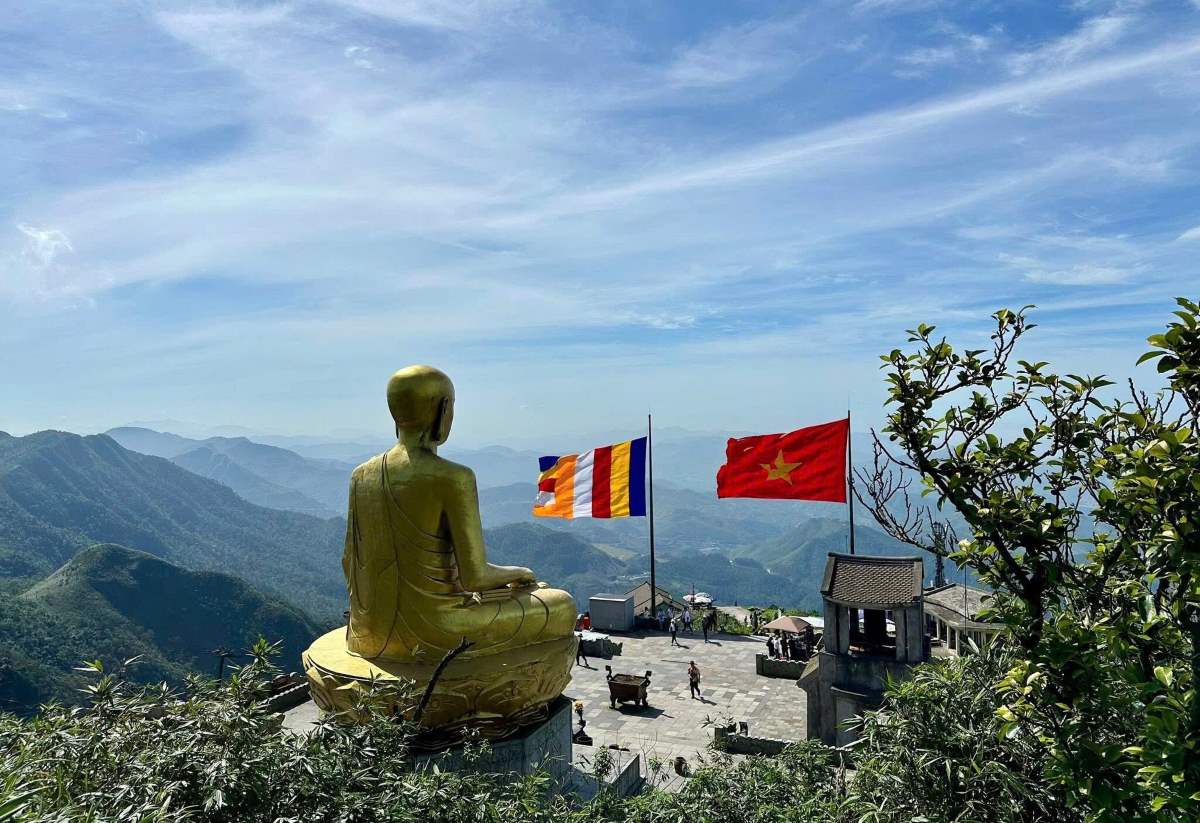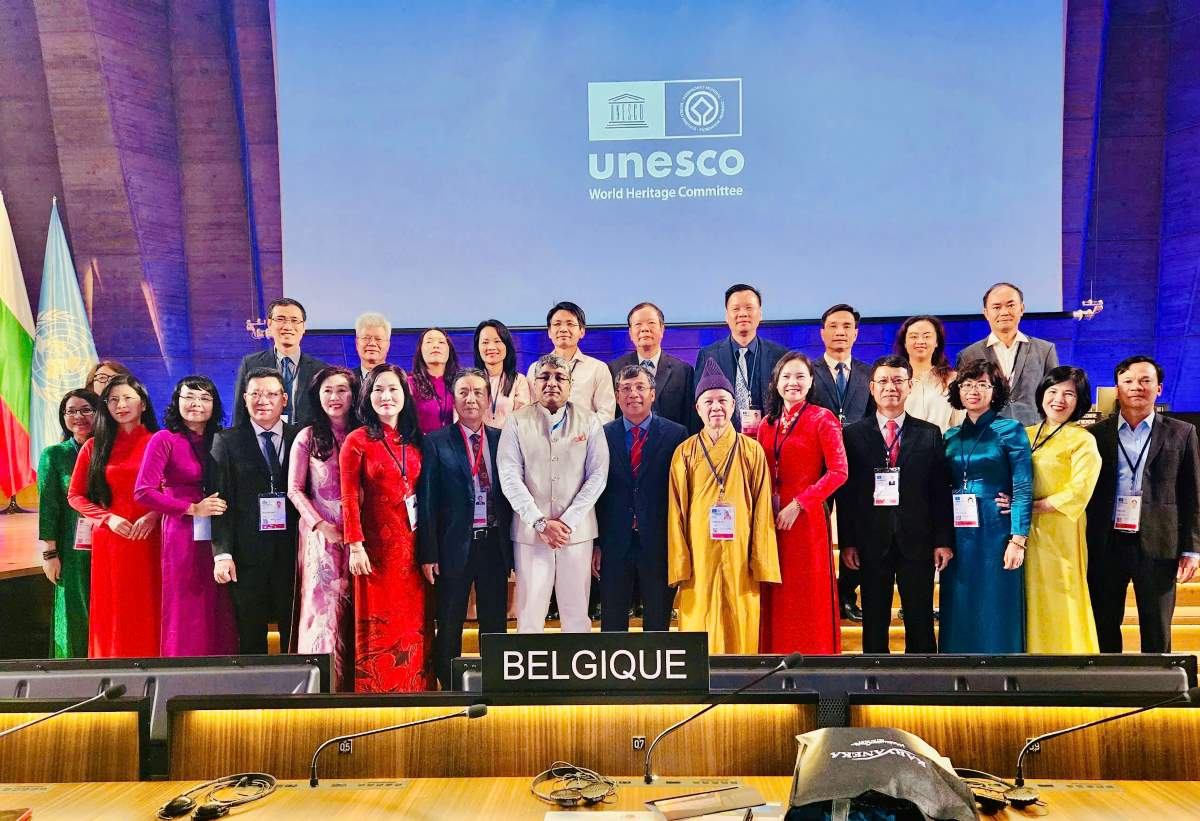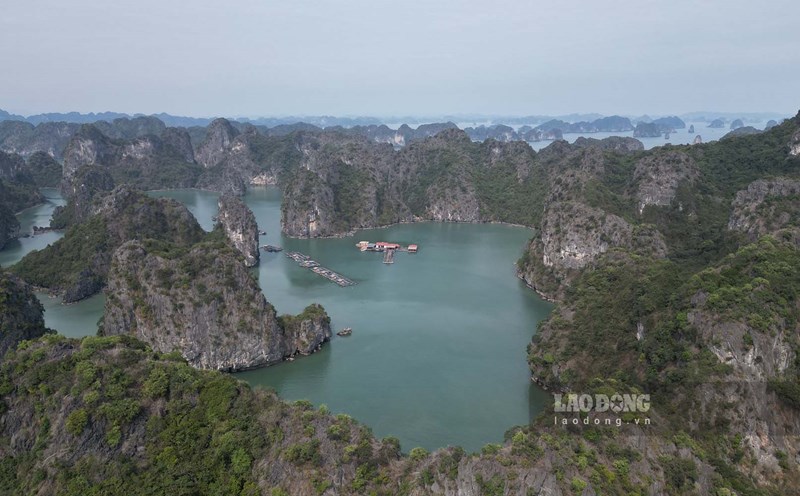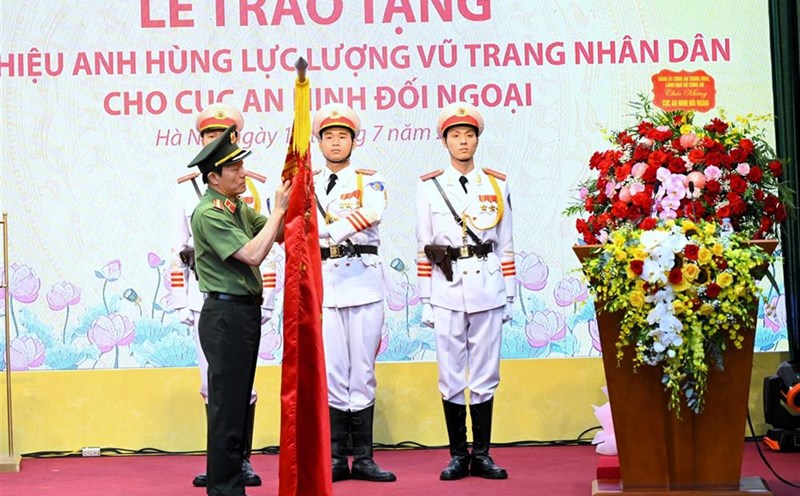Thus, Vietnam has 9 World Heritage Sites recognized by UNESCO and is the second inter-provincial world heritage of the country, as well as of Quang Ninh province, after the World Natural Heritage of Ha Long Bay - Cat Ba archipelago.
The complex of relics and scenic spots Yen Tu - Vinh Nghiem, Con Son, and Kiep Bac were recognized by UNESCO as World Cultural Heritage Sites according to the criteria (iii) and (vi), which are evidence of the unique combination of state, religion and people in the formation of Vietnamese national identity; along with the sacred landscape formed through regular, close interaction with nature and a moral system based on love for peace, self-cultivation, tolerance, compassion and harmony between people and nature.

In which, the Criteria (iii): The harmonious combination of State, religion and people's community developed from the homeland of Yen Tu mountainous region, has created a unique cultural tradition of global significance, shaping national identity, promoting peace and security in a larger region.
The complex of relics and scenic spots Yen Tu - Vinh Nghiem, Con Son, and Kiep Bac is a special testament to Truc Lam Buddhism, a unique Zen tradition of Vietnam established in the 13th century by the Tran kings, royals and monks, especially King Tran Nhan Tong, the only known monk in Asia, who voluntarily gave up his throne to become a monk, and publicly enlightened a Zen faith imbued with a philosophy of life and Vietnamese roots.
Integrating Dai Duong giao thuyet with the synthesis of Confucianism, Taoism and indigenous beliefs, creating a unique spiritual and philosophical identity, Truc Lam Buddhism has contributed to shaping the spiritual foundation of the Dai Viet nation, creating momentum for the rise of an autonomous and self-reliant country, while promoting cultural dialogue and the spirit of friendship and peace among ethnic groups. For centuries, the Yen Tu - Vinh Nghiem, Con Son, and Kiep Bac Monuments and Scenes Complex has always played an important role in practicing, passing on, spreading, and creating culture. The spirit of tolerance and creativity of Truc Lam Buddhism has inspired and inspired human values for the domestic and international communities.

Criteria (vi): Truc Lam Buddhism is a globally meaningful testament to the way a religion, originating from many beliefs, originating and developing from the homeland of Yen Tu, has affected world society to promote a strong country, ensuring regional peace and cooperation.
The complex of relics and scenic spots of Yen Tu - Vinh Nghiem, Con Son, and Kiep Bac is directly related to the birth and spread of the creative and humane values of Truc Lam Buddhism. The continuous organization of rituals, festivals, celebrations of Buddhism and pilgrimages to relic sites - both in Vietnam and international Truc Lam Buddhist organizations - proves the sustainable global concern of human philosophy, life values, community spirit, living in harmony with nature, loving peace and compassion.
With 12 clusters, relic sites, relic complexes and scenic spots of Yen Tu - Vinh Nghiem, Con Son, and Kiep Bac fully demonstrating the Truc Lam Buddhist tradition, from the establishment in the sacred Yen Tu mountain area proven in ancient temples, towers, archaeological relics, to the Vinh Nghiem Pagoda relic and Con Son - Kiep Bac relic site and the systematization of philosophies expressed through related steles, relics and rituals. These relics provide full representations of the history, spirit and geography of Truc Lam Zen Buddhism, demonstrating the formation, development process, and sustainable relationships of tangible and intangible cultural values and documentary heritages in historical and cultural spaces.
The complex has a total core area of 525.75 hectares, the total buffer zone area is 4,380.19 hectares. In which, the core area consists of 12 main heritage components, fully reflecting the stages of formation, spread and revival of Truc Lam Zen sect.
The 12 main heritage components include:
1. Hoa Yen Pagoda, Yen Tu, Quang Ninh: Monk worship center of Buddha Tran Nhan Tong, where Truc Lam Zen sect was formed.
2. Am Ngoa Van, Yen Tu, Quang Ninh: Where the Buddha entered the dead, considered the most sacred site of Zen.
3. Thai Mieu, Quang Ninh: Ancient meditation sites on the Yen Tu pilgrimage route, representing the practice of recitation in the sacred forest.
4. Bach Dang Deck Bridge (Yen Giang), Quang Ninh: a physical historical relic, reflecting the ideology of world domination and the spirit of protecting peace and national independence.
5. Lan Pagoda (Long Dong), Quang Ninh: Interdisciplinary and training center for talent enhancement, associated with Truc Lam's Buddhist organization activities.
6. Con Son Pagoda, old Hai Duong Province (now Hai Phong): Monastery of the Huyen Quang Three groups, the center for the development of the world-class Zen ideology.
7. Kien Bac Temple, old Hai Duong Province (now Hai Phong): associated with Tran Hung Dao, a symbol of the combination of national security household and Truc Lam Buddhist spirit.
8. Thanh Mai Pagoda, old Hai Duong province (now Hai Phong): This place is associated with the life and career of Zen master Phap Loa, the second founder of the Truc Lam Tam To Zen sect, when he monkzed, compiled kinhits and books about Buddhism during his lifetime.
9. Kinh Chu Cave, the old Hai Duong Province (now Hai Phong): Compared to the 'Nam Thien Duoc Hoang' which is the sixth most beautiful cave in Vietnam.
10. Nham Duong Pagoda, old Hai Duong Province (now Hai Phong): Monastery of Venerable Thuy Nguyet, the abbot of Thong Giac Dao Nam Thien su.
11. Bo Da Pagoda, old Bac Giang province (now Bac Ninh): A place for performing and training to increase them, standing out with an ancient document system and unique tower garden.
12. Vinh Nghiem Pagoda, old Bac Giang province (now Bac Ninh): Center for printing and preserving more than 3,000 Truc Lam bronze trees, recognized by UNESCO as a world documentary heritage.











